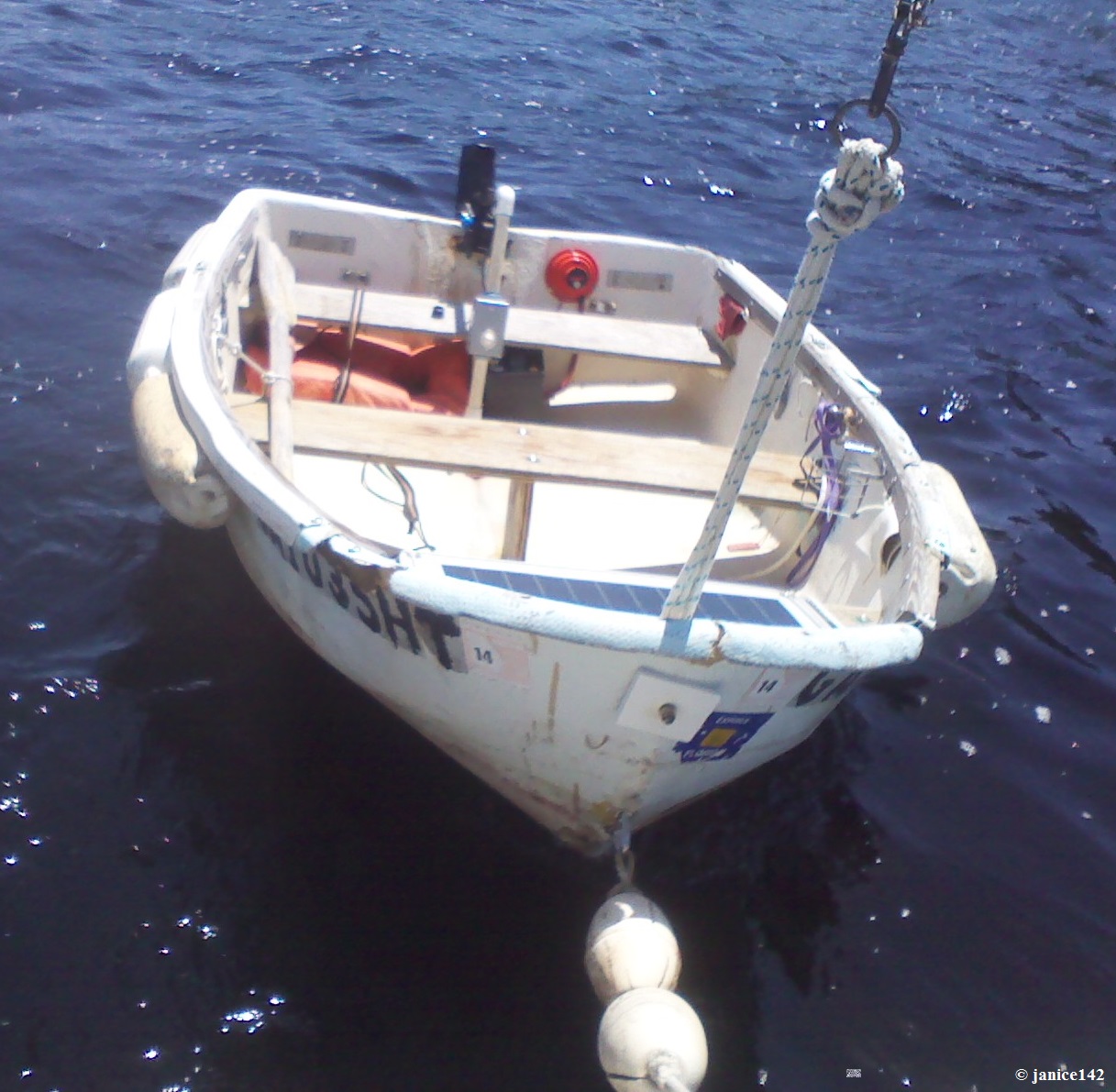dirtdoc1
Senior Member
- Joined
- Apr 12, 2016
- Messages
- 472
- Location
- United States
- Vessel Name
- Ann-Elyse II
- Vessel Make
- North Pacific 45
Yes - I am that Ignorant Boater.
I was on a two month maiden cruise. I was moored at Sucia Island and tied my tender to a pole in my cockpit. I don't know many knots. I bought a book and intend to do some reading. Anyways, it was night and I didn't want to go through the hassle of lifting it up top so I tied it to a pole with a few half hitches and then a knot at the end to secure the half hitches. I don't know what it is. I call it a granny knot. I thought it was tied pretty well. The wind came up that night and I went to check on it and it was gone. My brand new $15k console tender with a 30hp motor - gone!! I didn't sleep well that night. What a horrible feeling.
The next morning I could see it on the rocks a few hundred yards away. I called BoatUS and they came out and spent about two hours building a ramp out of logs so they could pull and roll it over the rocks, down to the water. They did a great job. They really worked hard to minimize the damage of removing it from on the rocks. The damage was mostly superficial. Of course it lost some gelcoat and had scratches and gouges in weird places on top of the tender. It must have gotten wedged under some over hanging rocks at high tide.
My first mistake was to use a braided fender line to tie off the tender, The braided line is very smooth and slippery and the knots did not hold. I think my second mistake was to use the wrong type of knot but I'm not sure. I'm hoping to get some feedback on that.
Well, live and learn. I was lucky to get my tender back and as far as the damage. Nothing serious just some battle scars. I left the boat in Richmond BC. I'm heading back up from Palo Alto next week to continue cruising. I'm also bringing a kayak with me.
I was on a two month maiden cruise. I was moored at Sucia Island and tied my tender to a pole in my cockpit. I don't know many knots. I bought a book and intend to do some reading. Anyways, it was night and I didn't want to go through the hassle of lifting it up top so I tied it to a pole with a few half hitches and then a knot at the end to secure the half hitches. I don't know what it is. I call it a granny knot. I thought it was tied pretty well. The wind came up that night and I went to check on it and it was gone. My brand new $15k console tender with a 30hp motor - gone!! I didn't sleep well that night. What a horrible feeling.
The next morning I could see it on the rocks a few hundred yards away. I called BoatUS and they came out and spent about two hours building a ramp out of logs so they could pull and roll it over the rocks, down to the water. They did a great job. They really worked hard to minimize the damage of removing it from on the rocks. The damage was mostly superficial. Of course it lost some gelcoat and had scratches and gouges in weird places on top of the tender. It must have gotten wedged under some over hanging rocks at high tide.
My first mistake was to use a braided fender line to tie off the tender, The braided line is very smooth and slippery and the knots did not hold. I think my second mistake was to use the wrong type of knot but I'm not sure. I'm hoping to get some feedback on that.
Well, live and learn. I was lucky to get my tender back and as far as the damage. Nothing serious just some battle scars. I left the boat in Richmond BC. I'm heading back up from Palo Alto next week to continue cruising. I'm also bringing a kayak with me.





